Medieval castles served as both fortresses and luxurious homes for nobility. While we often define castles primarily in terms of fortification and defense from enemies, lords, and ladies lived in them during times of peace and safety as well.
In order to provide stiff defence but also allow nobility to carry out their daily lives in an enjoyable manner, castles needed a complex combination of rooms and outside features. Continue reading to learn what rooms made castles both home and fortress to the medieval aristocracy.
Castle Layout: Spaces for Living and Sleeping
Great Hall
If you read medieval literature, you’ve probably seen mentions of the Great Hall. Medieval writers often waxed poetic about the great hall, associating it with warmth and celebration.
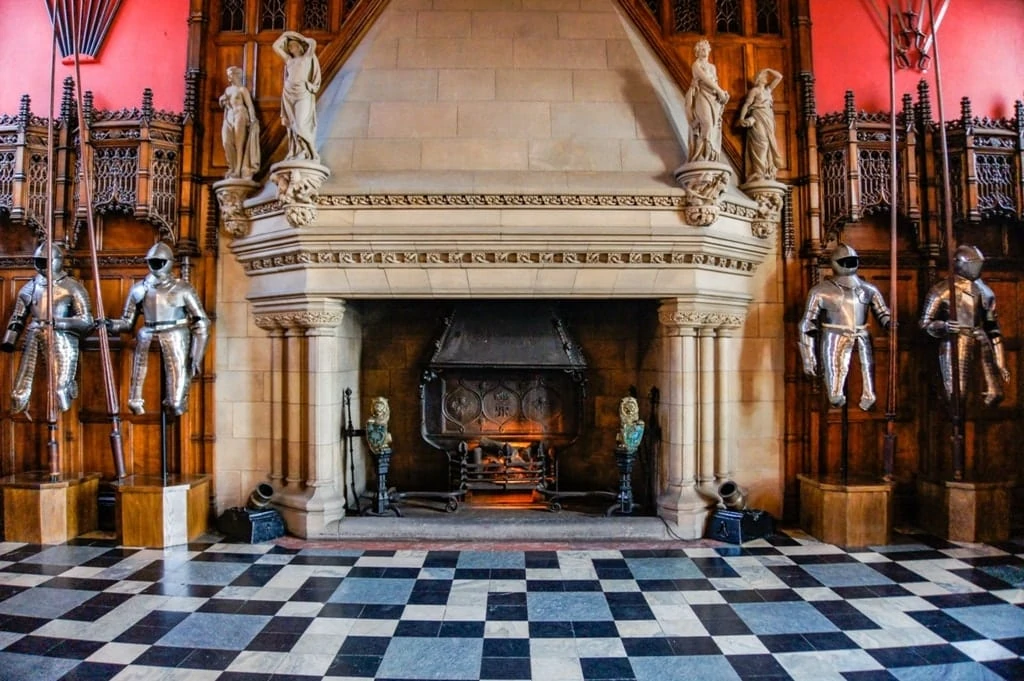
Found throughout Europe, but especially in France, England, and Scotland, the great hall served as the main gathering space for all castle residents.
The household would dine together in the great hall and the less-important residents would sleep on its floor at night. In some cases, the lord and lady of the castle might use it to receive guests or as a courtroom. A raised platform or ‘dais’ at the high end of the hall was where the lord and lady, as well as their honoured guests, would sit during court or when dining.
In order to accommodate these purposes, great halls were typically larger and more decorative than other rooms in the castle. They were typically very long with a high ceiling and an enormous fireplace, sometimes big enough to stand inside. Usually there was also a large window allowing natural light into the hall, although in a castle this window could be relatively small so as not to compromise the defensive effectiveness of the fortification.
In some areas, the great room would have a peephole or special listening device so the lord of the castle could watch or listen to what was happening from his bedroom.
Bedchambers
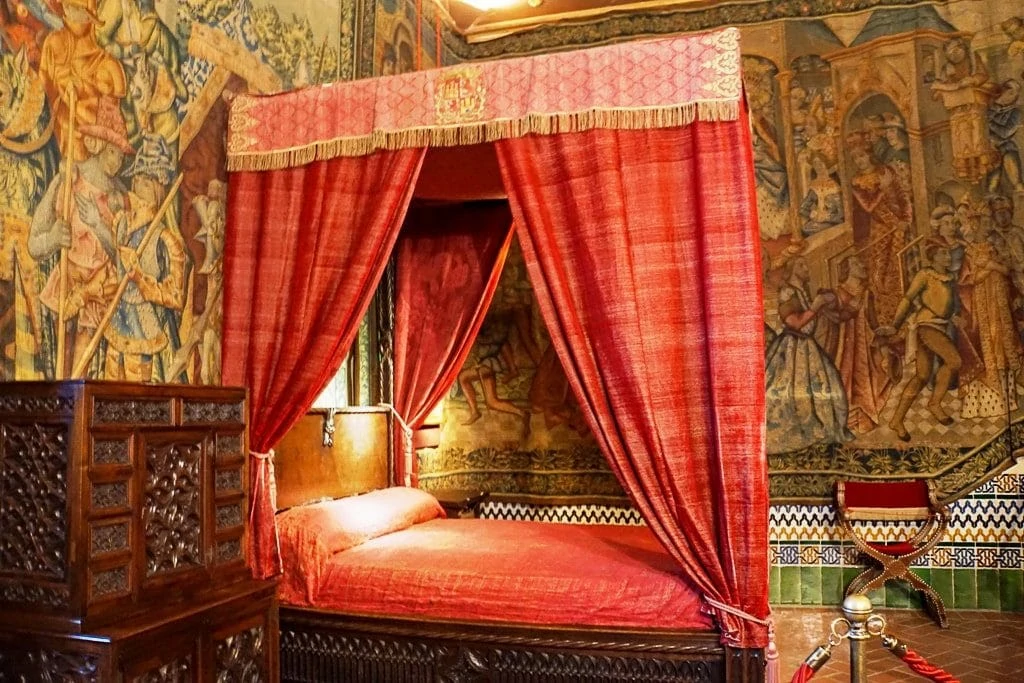
While some castle residents slept in the great hall, the lord and lady had a separate bed-chamber, where they slept in beds and their servants slept on the floor. Sometimes this space is called “the Lords and Ladies Chamber” or the “Great Chamber.”
At first, bed chambers were typically attached to the great hall, but castles built in the later middle ages had bed chambers (sometimes called solars) on a higher floor of the castle.
The solar also incorporated living quarters of the lord of the castle. The solar allowed the lord of the castle and his close household to withdraw into privacy, away from the noise and business of the great hall below. It was also used as a place to relax and could function as a space for the lord to conduct private business and hold meetings as well.
Garderobe
A garderobe was the medieval version of a bathroom, but it looked a bit different from any bathroom you’d expect to use today. It was a very tiny room that contained a latrine, which often emptied into an area outside the castle.
In a castle, the garderobe was usually a very simple hole, through which excrement would drop outside the building into a cesspit, or even straight into the castle moat. Natural materials such as moss, grass and hay were used as toilet paper.
Only the lord of the castle and other important guests would have private garderobes – the rest of the castle’s inhabitants would have used a communal toilet. The walls were often whitewashed in lime plaster to try and mask the dreadful smell.
But a garderobe would not have a bathtub, because bathtubs were not permanent installations like they are today. Instead, people bathed in wooden tubs that could be moved inside or outside depending on the weather.
Chapels
Many castles had a chapel where the family could attend mass and pray. The chapel was often located near the great hall and sometimes would be two stories high. An oratory, a smaller room for private prayer, could be attached to the chapel.
Small castle chapels were little more than a small room with pews and an altar, but larger castles had room for grander chapels. Some chapels even had raised galleries for higher ranking and noble worshippers to sit in.
Dungeons
Dungeons have a fearsome reputation as dark chambers where prisoners would be cruelly tortured, however this was not quite the reality. While medieval castles did have dungeons, they were usually no more than simple cells used to hold criminals awaiting trial. Usually the dungeon was situated underneath the castle in the basement, or else in the gatehouse of the fortification. Torture as a method for obtaining information was widespread in the medieval period, but specialist torture chambers only began to emerge in the early modern period with religious inquisitions.
Holding prisoners was not a common practice in medieval times, as it was expensive and used up precious space in an already cramped castle interior. Punishment in the form of fines, mutilation or execution was more common. Noble prisoners would not have been kept in the dungeon, but rather in the castle apartments.
Castle Layout: Spaces for Storing and Preparing Food
Kitchen

In the early middle ages and in less luxury buildings, the kitchen was unnecessary because people would prepare food using a fireplace in the main dining area. As the middle ages progressed, cooks began working in a separate wing or sometimes even a separate building, primarily to keep the smoke and smell of cooking away from residential rooms.
Depending on the number of people who lived in a castle, the kitchen staff could be huge. Cooks would be helped by various other staff, including butchers, bakers, cupbearers, brewers, serving staff and even spit boys, who were stationed beside the fireplace to turn the great spits holding joints of meat. Large castles required enormous amount of food on a daily basis, and one kitchen was not always sufficient for the castle’s needs.
Many castles had a complex of rooms used for storing and preparing different types of food. Some grand castles had their own bakehouses and breweries to prepare bread and beer for all the residents.
Food Storage Rooms
We now use the term “pantry” to refer to a room that stores all sorts of different food, but in the middle ages, the word had a more specific meaning. It was the room used specifically for storing bread and other foods that had a long shelf-life, and the person in charge of it was called the “pantler”. The pantry could also be used to store cutlery and plates.
Another storage room was the larder, where perishable foods such as meat could be preserved and kept cool. In northern European castles this was achieved by building the larder on the north-eastern side of the building (the side which got the least sun), and adding lots of windows to allow cool air in.
The buttery was where alcoholic beverages were stored and served. Beer was important to the medieval diet as it was safer to drink than water – the “butler” oversaw the buttery and served beverages to the castle’s inhabitants.
Castle Layout: Castle Fortifications
Towers
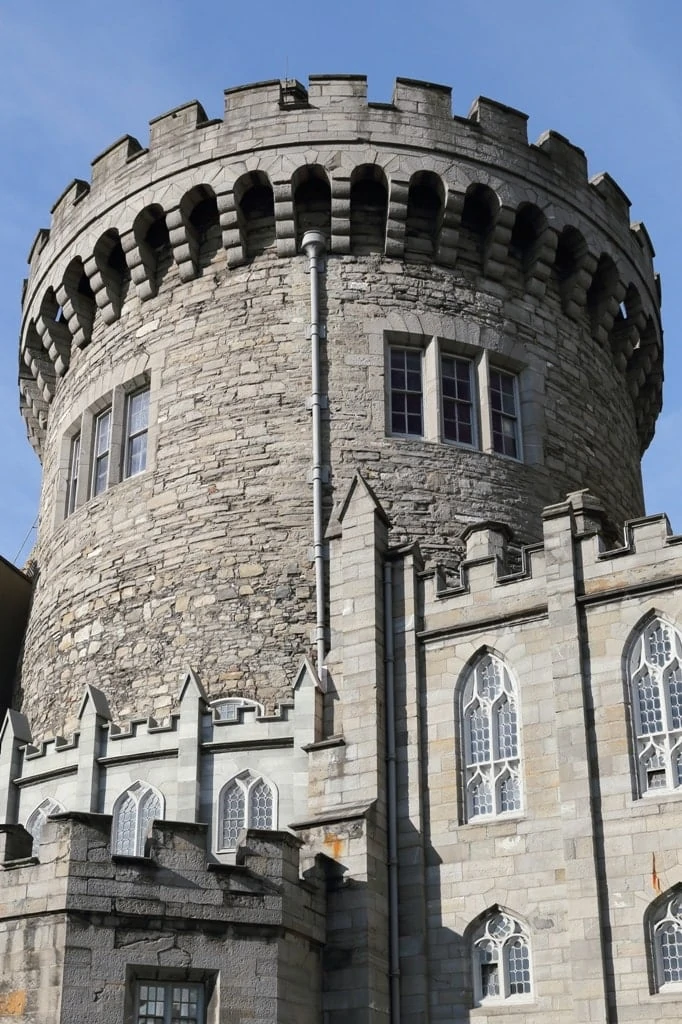
Towers were practical for the defence of a castle, largely because tower guards could watch for enemies and maintain a helpful vantage point for shooting arrows when enemies attacked.
Some attackers learned to destroy a square tower by burrowing under one corner and causing the entire structure to fall, so round towers became more popular as a way of avoiding this problem. The largest and strongest tower was typically the keep, placed in the centre of all the castle’s fortifications.
As siege artillery became increasingly effective, particularly with the invention of the counterweight trebuchet in the late 12th century, castles had to adapt. Rounded towers were better at absorbing and deflecting artillery fire and were therefore favoured over square towers.
Walls
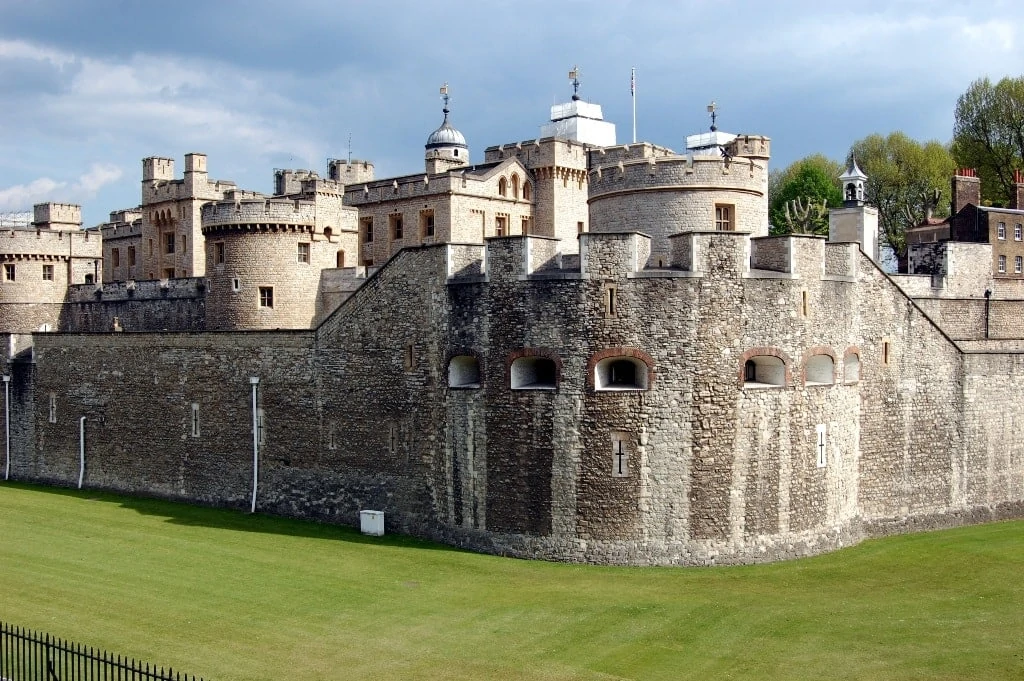
In the thirteenth century, the design of European castles began to change so that their defence relied less on towers and the keep. Known as “concentric castles,” they often featured at least two concentric walls in the shape of a square or irregular polygon.
Europeans did not invent this approach but learned it from Arab and Byzantine designs. Concentric castles developed first in the Crusader states in the late 12th and early 13th centuries, and slowly reached Europe from there.
Gatehouse
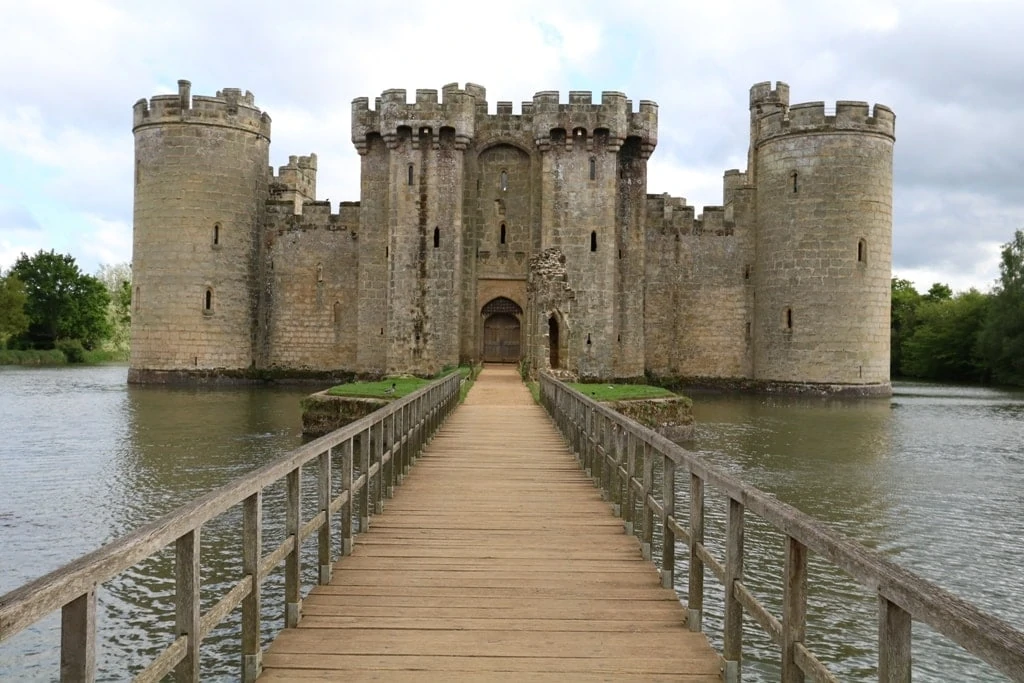
Gatehouses have existed since antiquity and were still used in the middle ages to protect the main entrance to the castle. Their purpose was to provide an easy access point for people who needed to enter the castle, without making it too easy for attackers to come in.
A gatehouse could include a drawbridge, portcullises, arrow loops, and/or murder holes. Later in the medieval period gatehouses came to replace many of the functions of the keep in early medieval stone keep castles. Gatehouses therefore became increasingly large and heavily fortified, even boasting prestigious residential chambers for guests.
Moat
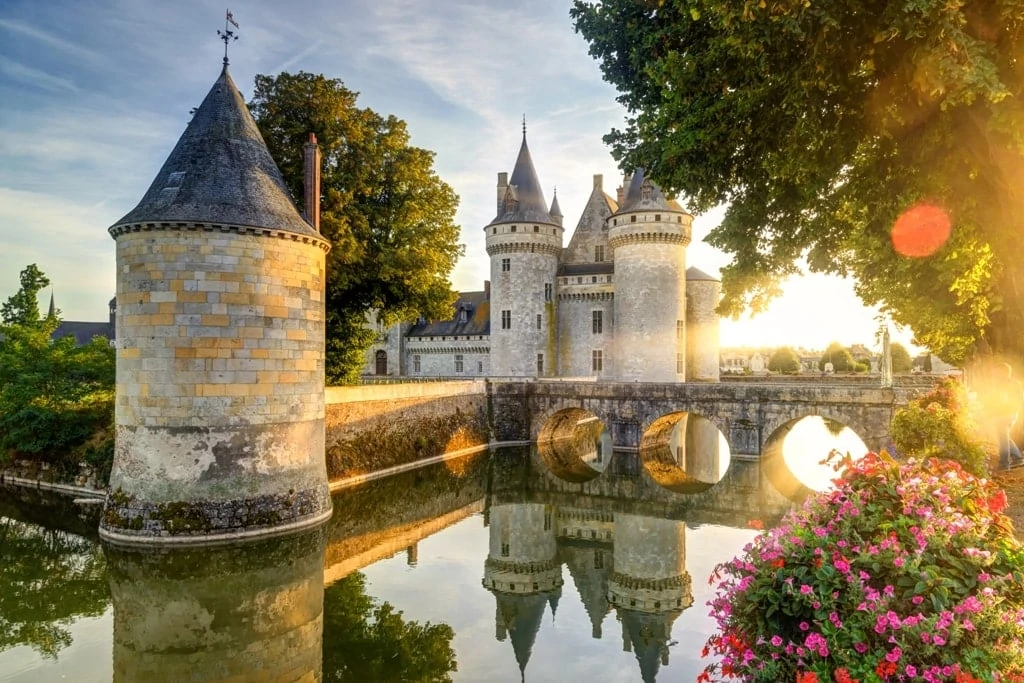
Moats were useful for deterring attacks and making it more difficult for enemies to access the castle. Most castles with moats used them for defence, but others had moats for more decorative purposes. Some moats contained freshwater, but many did not. Instead, they were created by damming nearby waterways to create a pool around the castle.
Sheltering Troops
Medieval castles sometimes included a casemate, a vaulted chamber used to shelter troops, or a place of arms, which was a large, covered area where troops could gather.
Castle Layout: Outside Spaces
Courtyards
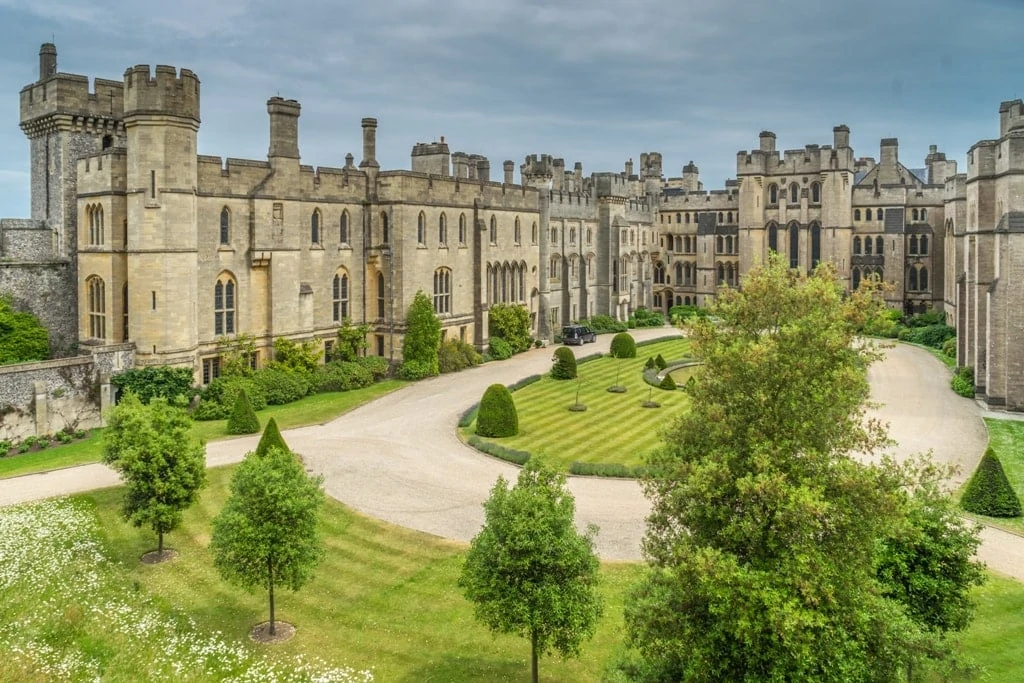
The arrangement of buildings and walls created large, outdoor spaces that were considered part of the castle layout. This might include multiple courtyards, some used for allowing animals to graze and others reserved for formal events. Some castles contained elaborate gardens or orchards.
Dovecotes
A dovecote was a specialized structure designed specifically for housing pigeons or doves. Many of them were freestanding circular or square structures, while others were attached to a barn. In medieval Europe, it was a status symbol to have a dovecote on your property and some areas had laws regulating their use.
Stables
Because horses were so valuable for work and travel, the stables were an important part of the castle complex. In addition to housing horses, they could include haylofts and living spaces for the grooms.
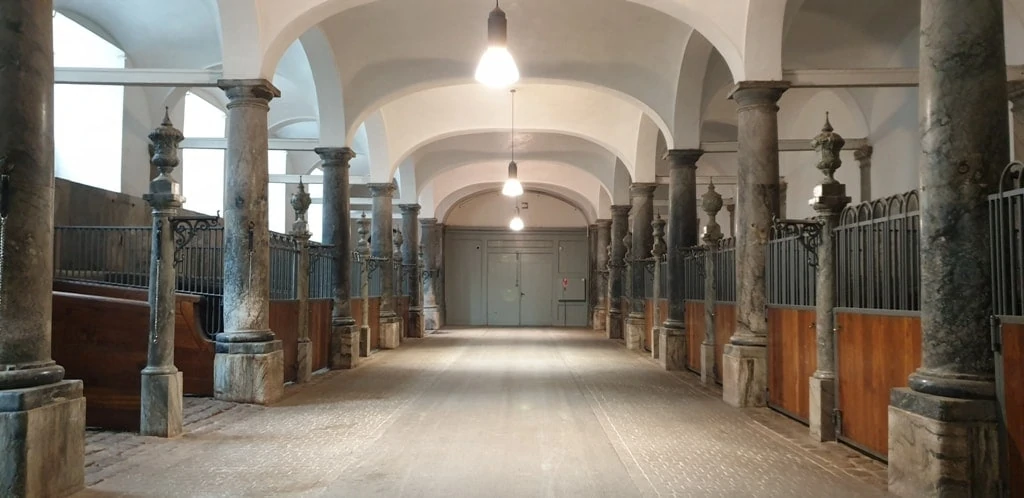
It is important to note that not all medieval European castles had the same layout or even included the same rooms. Across the medieval period, there were huge variations in the size and design of fortifications. Earlier castles tended to be based around a central freestanding keep, but this was later replaced by the concentric castle design, with a much more free-form layout.
FAQ’S about the Medieval Castle Layout
The layout of a medieval castle consisted of a moat, typically filled with water, thick walls and towers as another layer of protection, and a barbican to protect the gate.
Medieval castles had defensive walls, moats, and towers to protect them from attackers. The layout also included rooms for living and sleeping, spaces to store and prepare food, and areas like courtyards to enjoy the outside while being protected.
The main features of a castle in the Middle Ages included curtain walls and towers, a gatehouse with a drawbridge and a moat, and a ditch, often filled with water.
One of the most important features of a medieval castle was the thick walls. They were built of stone, brick, or wood to protect the castle residents from enemies.
